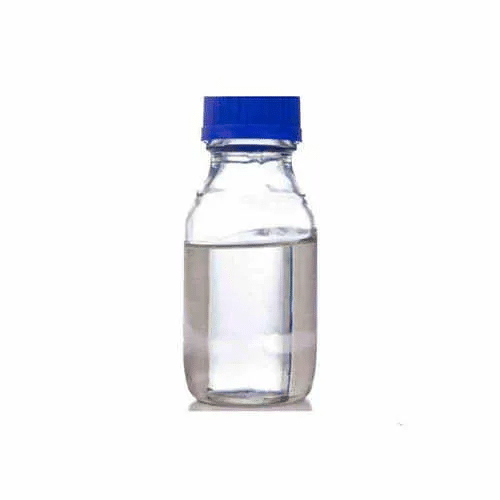Against the backdrop of the overall recovery of
the silicone industry, the deep processing sector is growing at an average annual rate of 20%, becoming a strategic high ground for companies to compete in layout. In the first half of 2025, the proportion of deep processed products such as silicone rubber and silicone oil will increase to 68%, an increase of 12 percentage points from 2020. Among them, the two emerging markets of lithium batteries and photovoltaics will contribute the main increment.

Lithium battery field: Commercial acceleration of silicon carbon negative electrode materials
Against the backdrop of the penetration rate of new energy vehicles exceeding 40%, silicon-based negative electrode materials have become a key direction for the next generation of power batteries due to their theoretical specific capacity (4200mAh/g) far exceeding graphite (372mAh/g). The 50000 ton/year lithium battery silicon carbon negative electrode project put into operation by Silicon Treasure Technology in Meishan, Sichuan Province adopts the "vapor deposition+surface coating" process, which improves the first efficiency to 88% and has a cycle life exceeding 1000 times. It has been certified by leading enterprises such as CATL and BYD.
At the same time, the role of silicone adhesives in battery packaging is becoming increasingly prominent. The polyurethane sealant developed by Xin'an Corporation has expanded its temperature resistance range to -60 ℃ to 180 ℃, achieving domestic substitution in solid-state battery module packaging; The thermal conductive silicone grease developed by Xingfa Group has a thermal conductivity coefficient of 6W/m · K, effectively solving the heat dissipation problem of 800V high-voltage platforms. The usage of a single electric vehicle is twice that of a 400V platform.
In the field of photovoltaics, the localization rate of adhesive film materials has exceeded 90%
With the popularization of N-type TOPCon and HJT battery technology, photovoltaic modules have higher requirements for the weather resistance and transmittance of packaging materials. Organic silicone film gradually replaces traditional EVA film due to its temperature resistance range of -40 ℃ to 120 ℃ and 92% light transmittance. By 2025, the domestic photovoltaic film production capacity will expand to 8 billion square meters, with organic silicon based products accounting for 65%.
In terms of technological breakthroughs, Huitian New Materials has developed co extruded POE/silicone composite film, which reduces the water vapor transmission rate to 0.5g/m ² · day and is widely used in extreme environmental projects such as deserts and coastal areas; The rapid curing silicone developed by Hangzhou Zhijiang has reduced the curing time to 8 minutes, increasing the efficiency of the component production line by 25%. It has been exported to Southeast Asian and Middle Eastern markets.
Semiconductor field: vast space for domestic substitution
In the chip manufacturing process, organic silicon materials are used for key processes such as photoresist stripping solution and wafer cleaning agent. Affected by international trade frictions, the import volume of semiconductor grade organic silicon materials in China will decrease by 35% year-on-year in 2025, with a localization rate of less than 40%. Dongyue Silicon Materials has invested in Future Materials and laid out electronic grade silane production lines, with product purity reaching 9N level, meeting the process requirements below 28nm; The silicon containing polyimide film jointly developed by Hesheng Silicon Industry and the Institute of Microelectronics, Chinese Academy of Sciences, has a temperature resistance of over 500 ℃ and has entered the supply chains of Huawei and SMIC.
Policy Empowerment: Special Subsidies Support Technological Challenges
In July 2025, the Ministry of Industry and Information Technology, in conjunction with the Ministry of Finance, released the "Special Plan for the Development of the New Materials Industry", which clearly includes the deep processing products of organosilicon in the key support scope. For bottleneck technologies such as silicon carbon negative electrodes and semiconductor grade silane, policy incentives such as a 150% deduction for research and development expenses and a 30% subsidy for equipment investment will be provided. According to calculations, relevant enterprises can save costs of over 200 million yuan annually and shorten the technology iteration cycle to 18 months.
Corporate Strategy: From "Scale Expansion" to "Deep Cultivation of Value"
Faced with the high barrier characteristics of the deep processing track, leading enterprises have adjusted their strategic focus one after another. Hesheng Silicon set up a new material industry fund of 5 billion yuan, focusing on investment in cutting-edge fields such as silicon based anode and aerogel; Xingfa Group and Tsinghua University jointly establish a joint laboratory to tackle the synthesis technology of organic silicon monomers for photoresist; Xin'an Group has acquired 32 high-end silicone oil patents through the acquisition of SKC's silicone oil business in South Korea, filling the domestic technological gap.
According to SMM statistics, the market size of deep processed organic silicon products is expected to exceed 80 billion yuan by 2025, with lithium batteries and photovoltaics accounting for 35% and 30% respectively. With the gradual breakthrough of technological barriers, the gross profit margin of deep processing links remains above 30%, far higher than the average level of 15% for individual products, becoming the core source of industry profits.
